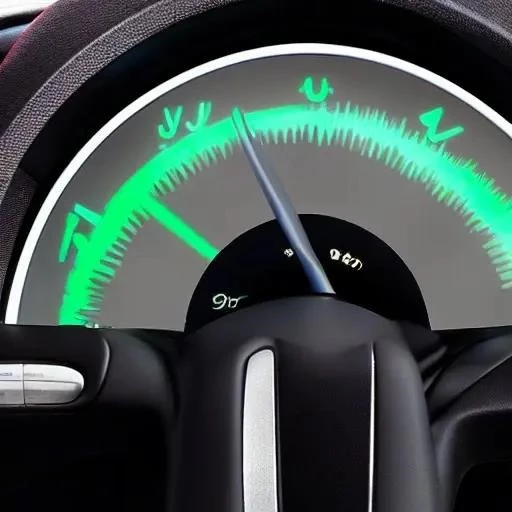
In the intricate symphony of automotive ownership, few metrics resonate with as much profound significance as mileage. Far more than a mere number ticking away on a dashboard, a car’s odometer reading is a living chronicle of its journey, a silent testament to its past, and a vital predictor of its future. For every discerning car owner, potential buyer, or even the casually curious, understanding precisely how to check this critical figure isn’t just a technicality; it’s an empowering act, a gateway to unlocking deeper insights into a vehicle’s health, value, and longevity. This seemingly simple act, often overlooked amidst the dazzling array of modern vehicle features, holds the key to making incredibly informed decisions, safeguarding your investment, and ensuring a smoother ride ahead.
Indeed, treating mileage as a trivial detail would be a grave oversight. It directly influences everything from routine maintenance schedules – dictating when critical components like timing belts or spark plugs require attention – to the crucial depreciation curve that determines a vehicle’s resale value. High mileage might signal impending wear and tear, while unusually low mileage for its age could hint at prolonged periods of inactivity, potentially leading to its own set of mechanical woes. By meticulously scrutinizing this numerical narrative, you gain an unparalleled advantage, transforming uncertainty into clarity and empowering yourself to navigate the complex automotive landscape with remarkable confidence. This fundamental understanding forms the bedrock of responsible car ownership, paving the way for optimal performance and sustained reliability.
Key Mileage Verification Methods & Importance
| Aspect | Description & Importance | Verification Method |
|---|---|---|
| Odometer Reading | The primary display of a vehicle’s total distance traveled. Crucial for assessing wear, maintenance needs, and market value. | Dashboard display (digital or analog). |
| Service Records | Official documentation of past maintenance, repairs, and mileage at specific dates. Essential for verifying odometer accuracy. | Dealership service history, independent mechanic invoices, owner’s manual log. |
| Vehicle History Reports | Comprehensive reports compiled from various databases (DMV, insurance, repair shops). Identifies potential odometer fraud (rollback). | Online services like CarFax, AutoCheck, EpicVIN. Official CarFax Website |
| Physical Inspection | An expert assessment of the vehicle’s condition (tire wear, pedal wear, interior) relative to its reported mileage. | Certified mechanic pre-purchase inspection. |
Decoding the Dashboard: Your First Step
At its most fundamental level, checking a car’s mileage begins with the odometer, that ubiquitous gauge prominently displayed on your vehicle’s dashboard. In older models, a mechanical, numerical wheel system would slowly turn, incrementally tallying each mile traversed. Modern vehicles, however, predominantly feature digital odometers, often integrated within a multi-information display. To access this, you might need to cycle through various display modes using buttons on your steering wheel or dashboard, typically labeled ‘Trip,’ ‘Info,’ or ‘Menu.’ The total mileage, distinct from trip meters that reset, will be clearly indicated, usually accompanied by the word ‘Odo’ or ‘Total Miles.’ This initial, readily available figure serves as your baseline, the starting point for a deeper investigative journey into your car’s documented history.
Beyond the Digital Readout: Unearthing the Full Story
Yet, relying solely on the dashboard odometer would be akin to reading only the cover of a book; the real narrative lies within. Savvy car buyers and conscientious owners extend their inquiry to service records and, more powerfully, comprehensive vehicle history reports. Imagine these reports as the vehicle’s medical file, detailing every significant event: oil changes, tire rotations, major repairs, and crucially, the recorded mileage at each visit. Industry leaders like CarFax and AutoCheck aggregate data from thousands of sources – including dealerships, repair shops, and state DMVs – providing an incredibly detailed timeline. By integrating insights from these reports, you can cross-reference the current odometer reading against past entries, swiftly identifying any suspicious gaps or inconsistencies that might signal odometer tampering, a deceptive practice that can significantly inflate a vehicle’s perceived value and mask underlying issues. This proactive verification is an indispensable safeguard, empowering you with verifiable facts.
The Future of Transparency: Professional Verification and Beyond
For the ultimate peace of mind, particularly when considering a significant purchase, a professional pre-purchase inspection conducted by a certified mechanic is remarkably effective. These experts possess the trained eye to spot discrepancies between a vehicle’s stated mileage and its actual physical condition – looking at wear patterns on pedals, steering wheel, seats, and tires, which often tell a story the odometer might try to conceal. Looking ahead, the automotive industry is rapidly embracing advanced telematics and blockchain technology. Future vehicles are expected to record mileage and service events on immutable, decentralized ledgers, making odometer fraud virtually impossible and enhancing transparency to unprecedented levels. This evolution promises a future where verifying a car’s journey will be as simple and secure as glancing at a digital certificate, further empowering consumers and ensuring the integrity of every transaction. The journey of automotive data is undeniably moving towards greater clarity and irrefutable truth.
